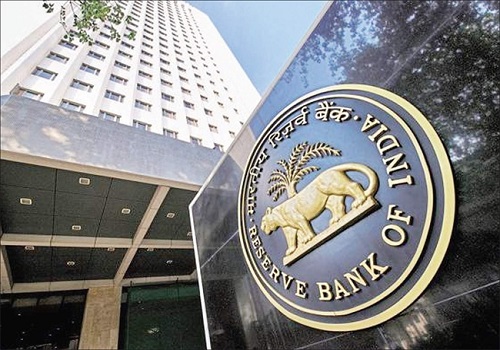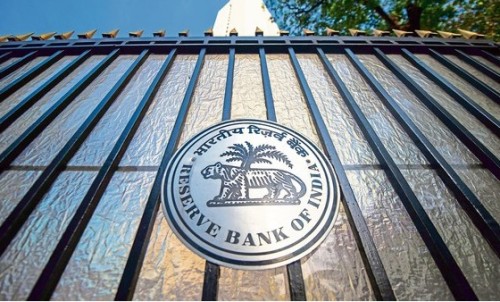Expert View on RBI Maintained Policy Continuity by Pankaj Pathak, Quantum Mutual Fund

Follow us Now on Telegram ! Get daily 10 - 12 important updates on Business, Finance and Investment. Join our Telegram Channel
https://t.me/InvestmentGuruIndiacom
Download Telegram App before Joining the Channel
Below are Quote on RBI Maintained Policy Continuity by Pankaj Pathak, Fund Manager-Fixed Income Quantum Mutual Fund
RBI Maintained Policy Continuity
The Monetary Policy Committee (MPC) voted unanimously to keep the policy repo rate unchanged at 4.0% and the reverse repo rate at 3.35%. It also maintained the forward guidance to keep an ‘accommodative stance’ as long as necessary to revive and sustain growth on a durable basis, while ensuring that inflation remains within the target going forward.
The RBI noted the negative impact of the second wave of covid-19 on the economy and lowered the GDP growth forecast for the fiscal year 2021-22 to 9.5% from earlier projection of 10.5%. The RBI reiterated the need for policy support - “at this juncture, policy support from all sides – fiscal, monetary and sectoral – is required to nurture recovery and expedite return to normalcy”.
With regard to inflation, the RBI has adopted a wait and watch approach highlighting risks emanating from rising commodity prices, logistics costs and disrupted supply chains. The RBI made a case for supply side measures from the Centre and State governments to soften inflationary pressures. The statement said – “Excise duties, cess and taxes imposed by the Centre and States need to be adjusted in a coordinated manner to contain input cost pressures emanating from petrol and diesel prices. Further supply side measures are needed to soften pressures on pulses and edible oil prices.”
The headline CPI inflation forecast is pegged at 5.1% in fiscal year 2021-22. This implies a negative real rate of 110 basis points based on the policy repo rate of 4.0%. At this juncture, low interest rates are needed to nurture the recovery in economic activity. However, persistent low or negative real rates could weaken macroeconomic stability and make the economy vulnerable to shock.
If growth recovery gets back on track with lowering of new covid-19 infections, focus may shift to policy normalisation. Going by the current trend, we expect the RBI to change its posturing towards end of the year and start withdrawing excess liquidity. On policy rates, it may start with hiking the reverse repo rate first by early next year followed by calibrated increase in repo rate.
From bond markets prospective, the biggest announcement was the extension of the RBI’s bond buying program with GSAP 2.0. The RBI raised the size of GSAP program and committed to conduct secondary market purchases of government bonds of Rs. 1.2 trillion in Q2 FY22 (July-September 2021). Another significant move was to include state development loans into the GSAP ambit. It announced to split the remaining Rs. 400 billion of GSAP 1.0 auction between centre and state government bonds. The purchase operation will be conducted on June 17, 2021.
This will help in containing the yield spread of SDLs over respective central government securities from rising sharply. This will also support the ultra-long (30-40 years maturity) Gsecs which tends to follow SDL yields.
RBI’s announcements were largely in line with market expectations. Bond market remained more or less flat after the announcement though yields were trading 1-2 basis higher than the previous day. By the end of trading session, bonds sold off by 3-4 basis over the previous day
The extension of GSAP program should bode well for the bond market and keep yields in narrow range near 6% in coming months. However, expectation of change in the monetary policy direction in second half could weigh on the market sentiment. We expect bond yields to move higher gradually over medium term following normalisation in liquidity conditions and policy rates.
Given the expectation of rising interest rates, it would be prudent for investors to focus on shorter maturity funds which impact less when yields rise. Remember bond prices and debt funds’ NAV fall when market yields move up.
Conservative investors should stick to very short maturity debt categories like liquid fund. Investors with longer holding period and with appetite to tolerate intermittent volatility could consider dynamic bond funds which can change the portfolio’s risk profile depending on evolving market situations. We also suggest investors to lower their return expectation from debt funds as potential for capital gains will be limited going forward.
To Read Complete Report & Disclaimer Click Here
Above views are of the author and not of the website kindly read disclaimer










Top News

Sterling and Wilson Renewable Energy falls as its promoters to sell up to 1 crore shares of ...
Tag News

Monthly Debt Market Update, September 2023: CareEdge Ratings











